The right to vote and to be elected, to pursue a career and even to run a marathon were once utopian ideals for women. Today, these rights are a reality for most women and girls across the globe but even now, in some countries, women are still discriminated against, limited in their activities, and even lack control of their own bodies. In developed states, women earn 83 cents for each dollar that men earn, and this gender gap varies by occupation and industry. That’s why, each year, on the 8th of March, we mark International Women’s Day – a holiday devoted to celebrating the achievements of women and to seeking gender equality.
This year, we addressed more questions regarding the global gender gap, the challenges women are facing today and the potential solutions for these. Check some insights below.
Key Takeaways:
- The differences in remuneration between women and men in terms of earnings is estimated to be 23% globally according to the International Labor Organization.
- COVID-19, climate changes, and the war in Ukraine have reversed previous progress on gender equality.
- Gender equality varies substantially across developing and developed countries. The differences lie in overall levels of education and the distribution of resources and wealth as well as the strength of the health system.
- Experts consider that the international community should strengthen its efforts on the applications of international conventions, treaties and other legal frameworks related to gender equity/equality.
DevelopmentAid: Why do you think the global gender gap is still so high despite all the efforts?
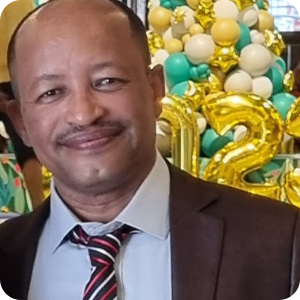
“Despite efforts made by the international community including humanitarian actors (donors, NGOs, CSO), regional unions and individual country’s governments, the global gender gap and the perpetuation of a patriarchal society are still so high due to the vicious circle of poverty, unpredictable political dynamics and the existing gender equality programs, which mostly target only women. According to much empirical research and many scholars, women perform two-thirds of the work for around 10% or even less of the income. In my opinion, the lesser income and less control over the household economy for women may lead to higher economic dependency on men which consequently stimulates the gender gap. The global economy is already affected by climate change/natural hazards and conflicts and a lack of good governance which has resulted in corruption and nepotism, competition for limited resources and unfair globalized market systems. Also, the unpredictable dynamics of politics is one of the major drivers for the continuation of the gender gap globally. Most political ideologies are born from the world-polarized political dichotomy of the so-called “North-South”, “West-East”, “the developed-underdeveloped”, “the democratic and undemocratic”, “socialist-capitalist”, “party-popularity”, “majority-minority” positions. Domestically, politics in Africa for instance is based on the above-mentioned ideologies and sometimes based on ethnic principles that lead to conflict, corruption, and a lack of safety and security which in turn displaces the majority of the population and puts women and girls at risk. A lack of safety and security triggers restrictions to accessing essential and basic services and assistance as well as protection from sexual and gender-based violence.”

“In my opinion, the attitudes that men exhibit towards women including the beliefs that men should be the presumed head of the household, particularly in decision making; having the power to decide on women incomes, limiting women’s freedom of movement and association; believing that they have the right to expect sex whenever they want from their wives, girlfriends and sexual partners and that it is acceptable to resort to violence if the women decline. These gender-related attitudes directly affect the health and well-being of women and girls. Engaging men and boys to challenge gender dynamics can have a positive impact on the health and well-being of women and girls. The logic of gender-based violence, asset ownership, and employment is based on gender stereotypes linking masculinity to macho behavior and perpetrators of violence while linking femininity to submission and victimhood. Both formal and non-formal education are important establishments for normative change and have the potential to address gender inequalities. While legislation on the prevention of gender-based violence and property rights exist, the major obstacles continue to exist in budgets and the human and institutional capacity to implement the frameworks.”
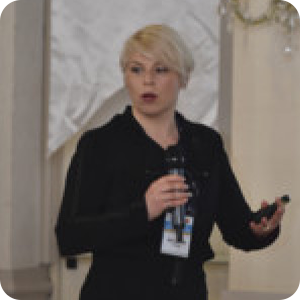
“Most of the countries that have shown (at least) a political willingness to advance gender equality by addressing important issues such as women empowerment, thus “closing of the gender gap”, are still lacking a real and actual commitment to doing so. Superficial macroeconomic studies and/or unrealistic fiscal solutions for gender equality issues are among the main pitfalls of government policies that are almost impossible to be implemented even when the political will is there. The missing link between the government policies on gender equality and the necessary funds for their implementation is often the most obvious cause for failure. On the other hand, gender-blind politicians and even blinder public administration exacerbate the slow but firm achievements in addressing gender inequalities such as closing the gender gap. The pandemic showed that governments were unprepared and not fully committed to continue their efforts in closing the gap or at least not hinder the hard-fought for achievements.”

“The gender gap is high, and it continues to grow thanks to different factors which are still present in many countries around the world, regardless of their level of development. One of these factors is the definition of a social stereotype of women. Socially, the role of women is as “the being who should be in charge of caring for the family and home” and therefore, a woman who develops her life project outside of this stereotype represents a contradiction, and she does not receive the necessary support from her community. The next factor is low access to capital – financial institutions and banks still exhibit big differences between the loans offered to men and those offered to women. Another factor that can be observed is the restriction of professional growth opportunities since women have less access to career development within organizations. The final factor influencing the gender gap is related to the pandemic- due to this phenomenon, many women had to leave their jobs and businesses to take on housework and care for family members.”
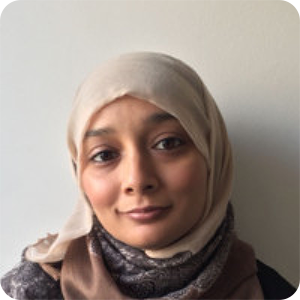
“The gender pay gap continues to be big and it is widening as it is an area that is not prioritised by governments. Improved employment policies are critical to addressing the issue as well as the implementation and monitoring of policies regularly and transparently. All organizations should be required to publish data on gender-related issues to their relevant governing body i.e., charity commissions or company regulatory bodies.”
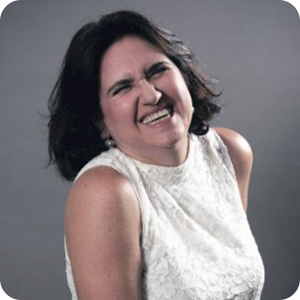
“It looks like systemic barriers are still the stubborn key to maintaining the wide global gender gap. A recent report by Accion’s Center for Financial Inclusion shows that social norms are the most important factor hindering women’s access to financial services including education. It is systemic as the data also showed that women are creditworthy and tend to pay their bills on time. Despite the fact that women in Latin American countries do not require permission from a male family member to access financial services, they are still not getting enough funding. A recent report by Latitud, a startup accelerator based in Brazil, stated that in 2021, Latin American-based startups received US$13 billion in venture capital investments of which women-led companies only received US$38 million. There are no data-based explanations for this. Organizations led by women outperform those led by men. More women on the board of directors and more women at the C level create more value, better products and better organizations. Yet women leading companies are in the minority. In the US, less than 10% of the Fortune 500 companies have a female CEO and less than 30% of the seats of boards in those companies are held by women.”
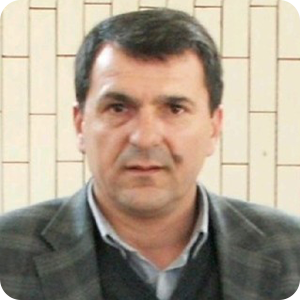
“Gender stereotypes still prevail with girls and women perceived to be staying at home to do house chores; performing certain secondary/soft work and not being able to perform primary/hard work; not capable of performing in leading positions; not capable in exact science or conducting scientific work and research.”
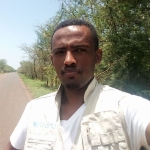
“An increased humanitarian crisis, pandemic, and climate change have threatened to reverse decades of progress made toward gender equality. In developing countries like Africa, climate change has negatively impacted girls and women, that are most reliant on natural resources for their livelihoods and/or who have the least capacity to respond to natural hazards. Women commonly face higher risks and greater burdens from the impacts of climate change in situations of poverty which has widened the gender gap states, UN agencies, INGOs, private sectors, and policymakers should recognize the importance of involving women and men and shall work closely to address gender inequality.”
DevelopmentAid: In which sectors are women mostly discriminated against in 2023?

“As we are at the beginning of the 2023 fiscal year, it is not possible to say women are discriminated against in certain particular sectors. However, from the trends and facts, women and girls globally are discriminated against in relation to access to education, specifically at higher levels where achieving a higher level of education would help them to access employment and gain the knowledge and skills to cope with safety risks. Women are also discriminated against with regard to employment opportunities and income benefits even though they contribute two-thirds of the world economy. Women and girls are also discriminated against in relation to political representation and decision-making positions which limits the reflection of women’s rights, access to and benefits from services, assistance, and ownership of assets in the legal framework/legal instruments.”
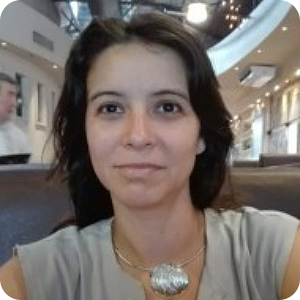
“From humanitarian crises involving migratory flows, such as the consequences of the COVID-19 pandemic, the war between Ukraine and Russia, and the disasters of the disastrous earthquake in Turkey and Syria, to economic and financial processes in global markets, these all particularly affect women who frequently assume the tasks of caring for and supporting their families. The difficulty in achieving economic empowerment is aggravated by the structural socialization of gender roles, largely segregating women from productive work and, when they are present in the workplace, from tasks associated with it in sectors that are comparatively less socially valued and consequently less well paid. For this reason, the sectors with the highest productivity, such as science and technology, energy industries, and high-added-value industries, are those in which women are less represented. And of course, in public and private decision-making spaces at the highest level.”

“Women still remain the driving force of society and the economy as most of the social services that should be provided from the governments rely on their unpaid care work. The missing public investments in social care for the elderly, children, the disabled and the most vulnerable should at least be translated into the recognition of the role that women and girls provide to meet those needs in their household as well as outside of it where they are also responsible for providing social care and often these efforts are taken for granted or less well paid.”

“In education, girls are more likely than boys to never set foot in a classroom and to be denied equal opportunities. Conflict, poverty, and other forms of social disadvantage also magnify gender inequality in education. Girls living in countries affected by conflict, for example, are 2.5 times more likely to be out of school than boys. Gender inequality is also strongly associated with income inequality over time and across countries of all income groups. For advanced countries with more equal economic opportunities across the sexes, income inequality arises mainly through gender gaps in economic participation. In leadership, women hold 35% of senior leadership positions compared to men, who represent 65% of all leadership positions and this signifies gender inequality in the world.”

“The COVID-19 pandemic had a devastating impact on the progress of women in the workplace. Women are discriminated against in all sectors, particularly the finance, professional tech, health and NGO sectors, and across all sectors, there are challenges with breaking the glass ceiling. For example, in the NGO SRHR sector, while there is a high number of women employees, senior management roles are more likely to be held by men.”

“Generally speaking, discrimination against women is related to a wide pay gap across economies. As the COVID-19 crisis showed, women were the most affected by the pandemic restrictions. In fact, in Latin American countries, the unemployment rate among women was and still is, almost double compared to that of men. Women spend more than 40% of their waking time taking care of others (children, the elderly) and therefore have little time to look for jobs or a means of livelihood. In addition, women have little political representation which means they have little power in the policy measures that may affect them. Also, women in politics are subjected to public harassment more than their male counterparts. Research has shown that harassment and long working hours have a negative effect on women’s willingness to hold public office. The former Prime Minister of New Zealand is just one example of female burnout in the public arena. Gender-based violence and access to healthcare are another two areas where women are highly discriminated against. Data on GBV around the globe is staggering while access to basic healthcare is still a dream in some countries in the Global South.”
See also: Why are women more affected by food insecurity than men? | Experts’ Opinions
DevelopmentAid: What are the biggest challenges women face nowadays in developing countries? What about the developed ones?

“In my view, women are facing a number of complex and diverse challenges in developing countries. They are suffering from lack of safety and security, access to economic benefits/employment opportunities including denial of access to basic and essential services and assistance as well as access to education opportunities, and discrimination in decisions that affect their lives. As a result of the limited of women in political representation and participation in the decision-making processes, the chance to reflect women’s rights and benefits in the international, regional, and customary legal frameworks and instruments are less which supports allowing the existing status quo, i.e., gender disparities, to continue. I also believe that the extent of discrimination and the scenarios in developed countries may be not so intensive but the gender gaps through discriminatory legal, economic, political, and social systems are still there.”

“Equality and equity are not synonymous; equity aims to contribute to the achievement of equality in spite of the differences (no matter what) that create disadvantages between people. And it requires fair consideration of the needs and interests imposed by the difference since differential treatment is what makes equity possible. In societies with great structural inequity, as is often the case in developing countries, political and social challenges appear around access to justice and respect for women’s human rights. In developed countries, vulnerability tends to be mainly of an economic nature and at a comparative level.”

“Women of colour/from minority groups are further discriminated against. In several countries, women’s rights continue to be eroded, unfavourable policies that prevent pregnant girls from returning to school reduce their chances of completing their education and having earning power, the decimation of abortion access in the United States will have a detrimental impact on women’s choice and employment decisions, climate change also disproportionately impacts women reducing their ability for self-reliance.”

“In my opinion, one of the biggest is limited educational opportunities. School-aged girls are treated much better today than in the past but there are still far too many who do not complete their education. Another challenge is insufficient access to sanitation facilities with more than one billion people around the world practicing open defecation. Although poor sanitation affects both genders, women and girls are particularly at risk of gender-based violence when they do not have a private place to relieve themselves. Another challenge worth pointing out is the limited access to land and safe shelter. Regressive social norms, discriminatory policies, and weak implementation of equitable laws prevent women from owning land in developing countries.”

“Patriarchal societies provide for less and less opportunities of proper education for girls which is translated into lower paid jobs and lower incomes compared to men, especially in developing countries. Gender-blind policies paired with corruption are draining public funds by channeling investments based only on the short-sighted interests of politicians. Developed countries, on the other hand, are shifting their interest towards other issues which do not seem to be inclusive of the inequalities faced by women and girls in those societies. The harsh competitiveness in the labor market especially for high-paid jobs, the difficulty in sharing the duties and burdens within the households, as well as the physically and mentally draining work-life balance, remain some of the most challenging issues for women and girls.”

“One key challenge for women is to keep pushing those barriers to be able to access financial services to grow their businesses and plan for a financial future. All efforts to build a more inclusive financial system are welcome and necessary. Pushing boundaries also involves a lot of personal commitment, again the New Zealand former Prime Minister comes to mind as well as all the women in war zones and disaster areas. It seems that violence has a woman’s face. More women are killed during civil unrest than men, women are the most affected by natural disasters and more women are affected by climate change effects. Pushing the boundaries also means confronting the naysayers and the policies that prevent women from owning land and accessing financial resources and public office. Women need more male allies in the workplace, at home and in society.”
DevelopmentAid: What should the international community consider to achieve gender equality?

“The international community has been trying to address the global gender disparities/gaps through different ways and means but, despite the large number of conventions and actions, UDHR in 1948, the W declaration in 1952, the CCMMM in 1957, the DEVW in 1993 and CEAFDAW, women and girls continue to suffer Thus, international communities should think of advancing their coverage, interventions, conventions, and treaties in more specific and streamlined approaches in terms of:
- The application of international conventions, treaties and other legal frameworks related to gender equity/equality.
- Humanitarian aid, political alliance, and cooperation deals between democratic and undemocratic countries should be in the focus of gender equality and accountability to people at risk of protection, specifically women and girls as well as children worldwide.
- As indicated above, the majority of conflicts arise from competing resources, limited education, and a lack of good governance. These conflicts trigger mass displacement and consequently the violation of human rights including sexual and physical violence. In the displacement situation, women are marginalized, discriminated against from basic and essential services and assistance. The situation is even worse when such conflict is fuelled by the interference of foreign countries which exacerbates the already fragile conflict environment by supporting some groups and providing weapons rather than finding solutions through strength partnership, cooperations, conflict resolution, peace negotiation, and rehabilitation. Hence, international communities should try to address signals of conflicts and find solutions instigated by the inter-communal and aggression of other countries through careful cooperation, an equal footing partnership, a sense of ownership and accountability by arranging peace negotiation and having conflict resolution mechanisms in place.
- Nowadays, the world population is suffering from and facing numerous widespread conflicts, political turmoil and chaos, economic crises due to natural disasters, COVID-19, and polarized political positions which, in turn, cause millions of displacements, violence, and abuse. To prevent the root causes of such displacement and consequent violence and abuse on the one hand and, on the other, respond to the already affected population, specifically women and girls, the allocation of resources to gender equity/equality projects is vital. Thus, the international community should provide and allocate resources based on certain tangible and contextual criteria with conditions to ensure accountability, transparency, and the use of the fund for the intended purpose. In addition, the project should aim to include men and boys to address the root causes of gender gaps/gender inequality.”

“Some actions that can be implemented by the international community in order to reduce the gender gap are to develop programs and activities that promote greater collective awareness towards the gender issue. Projects should start from the school which should be disseminated to the entire community to raise awareness of the current problem and manage actions to solve it. It is also important that support networks begin to be generated, managed, and publicized by governments. Such networks should be made up of institutions that promote protection, social and economic development with a gender approach. These networks must be apolitical and easily accessible to all socioeconomic levels. On the other hand, it becomes a priority for the different states to create spaces where women heads of families can leave the care of their children to expert professionals while they carry out some type of activity related to their educational or economic development. This action can reduce the gender gap while helping to change the social stereotype of women.”

“Emphasis should be placed on bridging the gap between the legislation and strengthening accountability mechanisms to follow up and evaluate the implementation of the legislation. Both formal and non-formal education are important establishments for normative change and have the potential to address gender inequalities; Engaging men and boys to challenge the gender dynamics can also have a positive impact on the health and well-being of women and girls.”

“Institutional change, legal frameworks, human resources, technical capacities, available funds, and good budgeting are among the solutions that governments should apply to close the gaps and advance gender equality. A higher focus by the international community on monitoring the real commitment of governments as well as targeted assistance in the identification of context-specific solutions to gender inequalities should be the next necessary steps.”
The International Development sector offers a wide range of job opportunities for both men and women. To access the full information and services that DevelopmentAid can provide to individual experts in search of rewarding jobs, click here.

